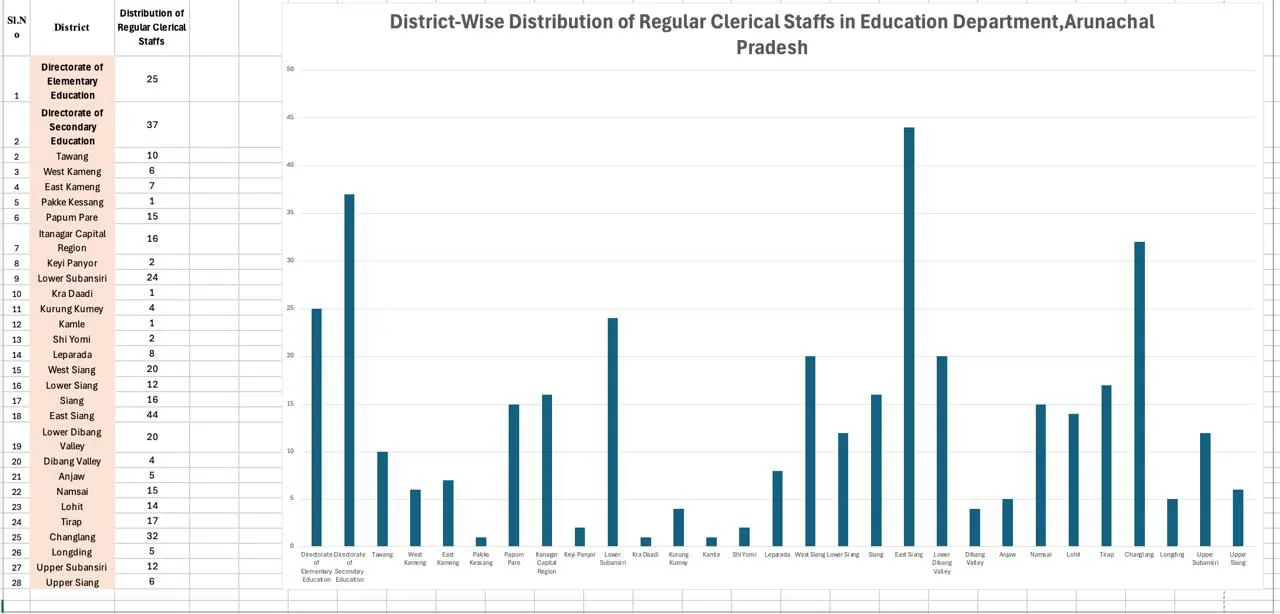[Amar Sangno]
ITANAGAR, 2 Feb: Huge disparities in deployment of ministerial and clerical staffers across the state’s deputy director of school education (DDSE) offices have exposed a flawed educational policy, favouritism, and partiality in the transfer and posting of clerical staffers, as well as administrative inertia within the education department.
 The Arunachal Times has accessed data on clerical staffers posted in different institutions across the state, including the directorate of elementary education (DEE) and the directorate of secondary education (DSE). The DEE has 27 clerical staffers, while the DSE has 37 such staffers.
The Arunachal Times has accessed data on clerical staffers posted in different institutions across the state, including the directorate of elementary education (DEE) and the directorate of secondary education (DSE). The DEE has 27 clerical staffers, while the DSE has 37 such staffers.
Among the districts, East Siang has an unusually higher number of clerical staffers, at 44. Changlang stands second with 32, while Lower Subansiri has 24, West Siang has 20, Lower Dibang Valley has 20, Tirap 17, Itanagar 16, Papum Pare and Namsai 15 each, and Tawang 10 clerical staffers.
Meanwhile, three districts – Kamle, Kra Daadi and Pakke-Kessang – are running with only one clerical staffer each in their DDSE offices. Similarly, Education Minister Passang Dorjee Sona’s home district, Shi-Yomi, and newly created Keyi Panyor have only two clerical staffers each.
Among the geographically larger districts, East Kameng is equipped with only seven clerical staffers, Upper Siang and West Kameng have six each, and Kurung Kumey and Dibang Valley have four each.
On being contacted, Sona said, “We need to rationalise the human resources for optimum output of the workforce in the larger interest of the department and the state.”
Education Commissioner Amjad Tak informed that the department is rationalising the posting of clerical staffers as part of the educational reforms being initiated by the chief minister. “Since we are rationalising the schools and teachers, rationalisation of the clerical staffers will be done too,” Tak said.
“We are working for the future generation, so rationalisation of the clerical staffers will be judiciously done, without pick and choose,” he added.
It is alleged that earlier, clerical staffers were deployed without following the norms, and at the whim of the then directors and people at the helm of affairs. It is also learnt that random transfer and posting of the staffers led to major disparity in clerical staff deployment in the districts. Some staffers being unwilling to serve, even after being transferred, is another factor why many bigger districts have less than 10 clerical staffers.





